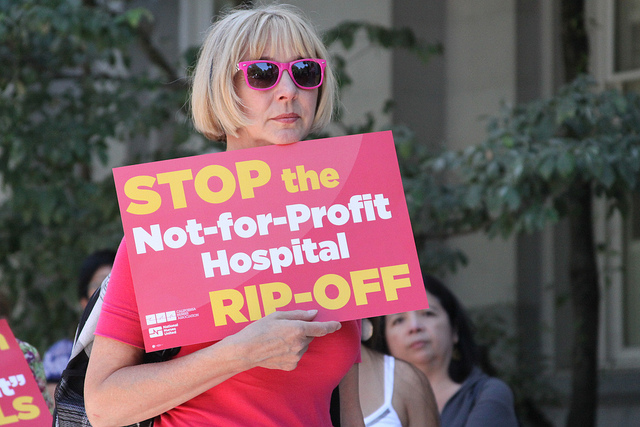News
Our Voice: Not-for-profit hospitals should provide their fair share of charity

Originally published Mar 21, 2013
Souce: MyDesert.com
Eisenhower Memorial Hospital is an enormous asset to the Coachella Valley.
Established in the late 1960s with the visionary support of Bob and Dolores Hope, it operates facilities in Rancho Mirage, La Quinta, Palm Desert, Cathedral City and Palm Springs. Its Rancho Mirage campus is home to the hospital, the Betty Ford Center for addiction treatment and the Barbara Sinatra Children’s Center for victims of abuse. It also has a partnership with the LGTB Center that features a health education program supported by a three-year grant from Eisenhower. Roughly 70 percent of Eisenhower’s community patients are elderly.
The Desert Sun wouldn’t want anything to stand in the way of its mission. However, we also believe that legislation to require not-for-profit hospitals, such as Eisenhower, to raise charitable spending to 5 percent of revenue is a reasonable idea.
Debate over the issue pits the California Nurses Association in support of the bill vs. the California Hospital Association, which is lobbying hard against it.
A report by the Institute for Health and Socio-Economic Policy said that in 2010 California’s private not-for-profit hospitals got $1.8 billion more in government subsidies and benefits from their tax-exempt status than what they provided in charitable care.
Until 1969, the federal government required not-for-profit hospitals to meet the 5 percent standard. However, after Medicare and Medicaid were enacted in 1965, hospitals argued that the need for charity care would decline so that hospitals could not meet the IRS standard and that they should be awarded more flexibility. The IRS dropped the 5 percent rule but established a “community benefit standard.”
Eisenhower CEO G. Aubrey Serfling called the requirement ridiculous because it doesn’t include huge amounts of health care provided to Medicare and MediCal patients that aren’t adequately reimbursed.
According to the hospital’s 2012 community benefits assessment, Eisenhower spent 2.7 percent of its revenue on charity. That’s higher than the 2010 statewide average of 2.54 percent. However, if the gap in reimbursements were included, Eisenhower’s percentage of charitable giving would be 18 percent.
Jan Emerson-Shea, the hospital association’s vice president for external affairs, said the shortfall in Medicare and MediCal reimbursements was $9 billion last year in California. However, every medical facility in California has to deal with that issue, including for-profit hospitals such Desert Regional Medical Center in Palm Springs and JFK Memorial Hospital in Indio. It would be great if the government would deal with that inequity, but given the state of Medicare that’s unlikely.
For-profit hospitals don’t get benefit of tax-exempt status that not-for-profit hospitals enjoy and don’t have the same charitable obligations. The issue that will be before the Assembly Health Committee when hearings begin in April will be setting the standard of those obligations.
Malinda Markowitz, co-president of the California Nurses Association, says California not-for-profit hospitals accumulated $4.5 billion in profits in 2010, making the term “not-for-profit” an oxymoron. Nearly half of the profits are raked in by the state’s two largest chains, Sutter Health and Kaiser Permanente. She also noted that those corporations provide compensation packages of more than $1 million for their top 45 executives. Serfling makes $1.3 million, according to the Institute for Health report, ranking him 20th out of 111 California not-for-profit CEOs and presidents. Markowitz calls the system a scam. We wouldn’t go that far, but it certainly seems reasonable that the public benefit should be at least equal to the benefits enjoyed by the corporations that operate the hospitals. The effort should be measured in a clear and transparent way.
Unlike California, 11 other states can suspend tax-exempt status if hospitals don’t meet their charitable-giving threshold. California must set a fair threshold and consider that option.